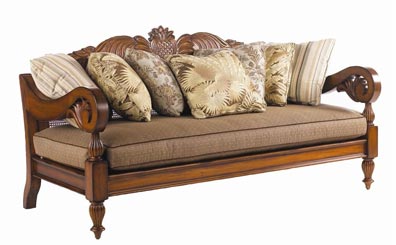Have you been bitten by the estate sale bug? If you're into unique décor, curated design, or just downright good deals, estate sales can be a mine of exhilarating finds. You can come across high-quality goods that you'd usually have to pay a small fortune for and even stumble on holy-grail collectors' items.
If you want to save big or buy some really precious pieces, you’ve come to the right place. In the coming weeks we will provide an in-depth list of the most valuable things to watch out for at estate sales near you. Ready? Let’s start treasure hunting!
Always browse the art
This week we start with artwork and solid wood furniture. Let’s begin with the artwork.
Art helps to anchor spaces, create compelling focal points, inject personality, and tie colors together. But buying art from galleries can get expensive fast. If you want original, one-of-a-kind artwork, estate sales are where it's at. Unless the paintings are by famous artists, you should be able to pick them up for a comparative song. Always look for the artist's signature. Signatures indicate that the piece is original and can allow you to research the artist.
If you want to save big, scope the joint for oil paintings. Oils are inherently more expensive than acrylic paintings and sketches, thanks to the skill required and the material costs. Oil paintings also tend to be rich in texture, which can help to break up the flatness of prints and framed photography.

If you're feeling unsure, test the waters with more neutral pieces that will easily play with the rest of your décor. If you want to make an impact, keep your eyes peeled for big, bright, bold, or unusual paintings. Also, remember that art can come in many forms. Carvings and sculptures can help dress up bookcases, credenzas, and empty corners. Tapestries, wall hangings, and hung carpets can add richness and texture.
Watch out for solid wood furniture

You can often find wood furniture for a steal at estate sales. If the previous owners are elderly, there's a good chance they purchased their pieces back when furniture was built to last a lifetime. Most items produced before the 1950s were made from solid wood.
To make sure you aren't buying a potential problem, carefully scrutinize pieces for any defects like loose legs, bad burn marks, or stuck drawers. Consider the extra time and expense required for repairs. Will you be able to fix the item yourself, or will you need to send it to a carpenter?
Check for signs of superior craftsmanship like hand carving, dovetail, dowel, and mortise and tenon joints. If you have your eye on a veneered item, inspect the edges. If the veneers are book-matched, you're probably looking at a high-quality piece. If you can find a maker's mark, you may have hit the vintage furniture jackpot. These inscriptions take the form of small plaques, engravings, or old labels discreetly placed inside drawers, on the back or underside, or on the bottom edge of a cabinet door. They usually include the name of the furniture firm or designer and its country of origin.
NEXT WEEK: Glassware and vintage rugs